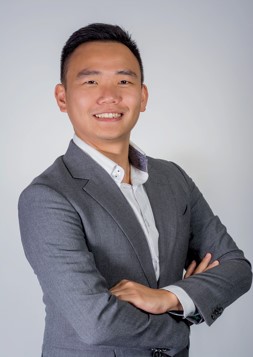 Speaker: Prof Stephen Pennycook
Speaker: Prof Stephen Pennycook
Abstract Details: The aberration-corrected scanning transmission electron microscope (STEM) provides much more than enhanced resolution. Using accelerating voltages below the damage threshold allows direct, real space atomic imaging and spectroscopy with minimal damage [1]. Point defect configurations and electronic structure can be directly determined [2,3], including localized plasmon resonances [4]. Furthermore, energy transfer from the beam can excite atomic migration or metastable configurations that can be quantified through density functional theory [5], and can even be used for nanofabrication [6,7]. Future possibilities include adding a monochromator for nanoscale band gap mapping, and imaging at different temperatures and under applied bias.
References
[1] O. L. Krivanek, M. F. Chisholm, V. Nicolosi, T. J. Pennycook, G. J. Corbin, N. Dellby, M. F. Murfitt, C. S. Own, Z. S. Szilagyi, M. P. Oxley, S. T. Pantelides, and S. J. Pennycook, "Atom-by-atom structural and chemical analysis by annular dark-field electron microscopy," Nature, 464, 571–574 (2010).
[2] W. Zhou, M. Kapetanakis, M. Prange, S. T. Pantelides, S. J. Pennycook, and J.-C. Idrobo, "Direct Determination of the Chemical Bonding of Individual Impurities in Graphene," Phys Rev Lett 109 (2012) 206803.
[3] Y. Gong, Z. Liu, A. R. Lupini, G. Shi, J. Lin, S. Najmaei, Z. Lin, A. L. Eli?as, A. Berkdemir, G. You, H. Terrones, M. Terrones, R. Vajtai, S. T. Pantelides, S. J. Pennycook, J. Lou, W. Zhou, and P. M. Ajayan, "Band Gap Engineering and Layer-by-Layer Mapping of Selenium-Doped Molybdenum Disulfide," Nano Lett, 14, 442–449 (2014).
[4] W. Zhou, J. Lee, J. Nanda, S. T. Pantelides, S. J. Pennycook, and J.-C. Idrobo, "Atomically localized plasmon enhancement in monolayer graphene," Nature nanotechnology, 7, 161–165 (2012).
[5] S. J. Pennycook, W. Zhou, S. T. Pantelides, Watching Atoms Work: Nanocluster Structure and Dynamics, ACS Nano. 9 (2015) 9437–9440.
[6] J. Lin, O. Cretu, W. Zhou, K. Suenaga, D. Prasai, K. I. Bolotin, N. T. Cuong, M. Otani, S. Okada, A. R. Lupini, J.-C. Idrobo, D. Caudel, A. Burger, N. J. Ghimire, J. Yan, D. G. Mandrus, S. J. Pennycook, and S. T. Pantelides, Nat. Nano., 9, (2014) 436.
[7] S. Jesse, Q. He, A. R. Lupini, D. N. Leonard, M. P. Oxley, O. Ovchinnikov, R. R. Unocic, A. Tselev, M. Fuentes-Cabrera, B. G. Sumpter, S. J. Pennycook, S. V. Kalinin, and A. Y. Borisevich, "Atomic-Level Sculpting of Crystalline Oxides: Toward Bulk Nanofabrication with Single Atomic Plane Precision," Small, 11, 5895–5900 (2015).
About the Speaker: Stephen J. Pennycook is a new member at our Centre. He is a Professor in the Materials Science and Engineering Dept., National University of Singapore, an Adjunct Professor in the University of Tennessee and Adjoint Professor in Vanderbilt University, USA. Previously, he was Corporate Fellow in the Materials Science and Technology Division of Oak Ridge National Laboratory and leader of the Scanning Transmission Electron Microscopy Group. He completed his PhD in physics at the Cavendish Laboratory, University of Cambridge in 1978. Since then he has been actively pursuing the development and materials applications of atomic resolution Z-contrast microscopy and electron energy loss spectroscopy. Pennycook is a Fellow of the American Physical Society, the American Association for the Advancement of Science, the Microscopy Society of America, the Institute of Physics and the Materials Research Society. He has received the Microbeam Analysis Society Heinrich Award, the Materials Research Society Medal, the Institute of Physics Thomas J. Young Medal and Award and the Materials Research Society Innovation in Characterization Award. He has 38 books and book chapters, over 400 publications in refereed journals and has given over 200 invited presentations. His latest book is “Scanning Transmission Electron Microscopy.”
Click HERE for directions
—
To view all the upcoming seminars, you can visit: https://graphene.nus.edu.sg/news-events/events/
You may also Like & Subscribe our following channels below to receive instant notifications for new announcements.






 Speaker: Prof Stephen Pennycook
Speaker: Prof Stephen Pennycook  Speaker: Mr Jax Lee (???)
Speaker: Mr Jax Lee (???)